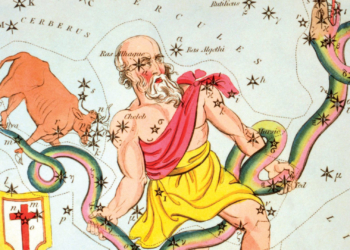
By Alessandro Fedrizzi and Massimiliano Proietti | Phys.org
Alternative facts are spreading like a virus across society. Now it seems they have even infected science—at least the quantum realm. This may seem counter-intuitive. The scientific method is after all founded on reliable notions of observation, measurement, and repeatability. A fact, as established by a measurement, should be objective, such that all observers can agree with it.
But in a paper recently published in Science Advances, we show that in the micro-world of atoms and particles that are governed by the strange rules of quantum mechanics, two different observers are entitled to their own facts. In other words, according to our best theory of the building blocks of nature itself, facts can actually be subjective.
Observers are powerful players in the quantum world. According to the theory, particles can be in several places or states at once—this is called a superposition. But oddly, this is only the case when they aren't observed. The second you observe a quantum system, it picks a specific location or state—breaking the superposition. The fact that nature behaves this way has been proven multiple times in the lab—for example, in the famous double-slit experiment (see video).
In 1961, physicist Eugene Wigner proposed a provocative thought experiment. He questioned what would happen when applying quantum mechanics to an observer that is themselves being observed. Imagine that a friend of Wigner tosses a quantum coin—which is in a superposition of both heads and tails—inside a closed laboratory. Every time the friend tosses the coin, they observe a definite outcome. We can say that Wigner's friend establishes a fact: the result of the coin toss is definitely head or tail.
Wigner doesn't have access to this fact from the outside, and according to quantum mechanics, must describe the friend and the coin to be in a superposition of all possible outcomes of the experiment. That's because they are “entangled”—spookily connected so that if you manipulate one you also manipulate the other. Wigner can now in principle verify this superposition using a so-called “interference experiment“—a type of quantum measurement that allows you to unravel the superposition of an entire system, confirming that two objects are entangled.
When Wigner and the friend compare notes later on, the friend will insist they saw definite outcomes for each coin toss. Wigner, however, will disagree whenever he observed friend and coin in a superposition.
This presents a conundrum. The reality perceived by the friend cannot be reconciled with the reality on the outside. Wigner originally didn't consider this much of a paradox, he argued it would be absurd to describe a conscious observer as a quantum object. However, he later departed from this view, and according to formal textbooks on quantum mechanics, the description is perfectly valid.
The experiment
The scenario has long remained an interesting thought experiment. But does it reflect reality? Scientifically, there has been little progress on this until very recently, when Časlav Brukner at the University of Vienna showed that, under certain assumptions, Wigner's idea can be used to formally prove that measurements in quantum mechanics are subjective to observers.
Brukner proposed a way of testing this notion by translating the Wigner's friend scenario into a framework first established by the physicist John Bell in 1964. Brukner considered two pairs of Winners and friends, in two separate boxes, conducting measurements on a shared state—inside and outside their respective box. The results can be summed up to ultimately be used to evaluate a so-called “Bell inequality”. If this inequality is violated, observers could have alternative facts.
We have now for the first time performed this test experimentally at Heriot-Watt University in Edinburgh on a small-scale quantum computer made up of three pairs of entangled photons. The first photon pair represents the coins, and the other two are used to perform the coin toss—measuring the polarization of the photons—inside their respective box. Outside the two boxes, two photons remain on each side that can also be measured.
Despite using state-of-the-art quantum technology, it took weeks to collect sufficient data from just six photons to generate enough statistics. But eventually, we succeeded in showing that quantum mechanics might indeed be incompatible with the assumption of objective facts—we violated the inequality!
The theory, however, is based on a few assumptions. These include that the measurement outcomes are not influenced by signals traveling above light speed and that observers are free to choose what measurements to make. That may or may not be the case.

Another important question is whether single photons can be considered to be observers. In Brukner's theory proposal, observers do not need to be conscious, they must merely be able to establish facts in the form of a measurement outcome. An inanimate detector would, therefore, be a valid observer. And textbook quantum mechanics gives us no reason to believe that a detector, which can be made as small as a few atoms, should not be described as a quantum object just like a photon. It may also be possible that standard quantum mechanics does not apply at large length scales, but testing that is a separate problem.
This experiment, therefore, shows that, at least for local models of quantum mechanics, we need to rethink our notion of objectivity. The facts we experience in our macroscopic world appear to remain safe, but a major question arises over how existing interpretations of quantum mechanics can accommodate subjective facts.
Some physicists see these new developments as bolstering interpretations that allow more than one outcome to occur for observation, for example, the existence of parallel universes in which each outcome happens. Others see it as compelling evidence for intrinsically observer-dependent theories such as Quantum Bayesianism, in which an agent's actions and experiences are central concerns of the theory. But yet others take this as a strong pointer that perhaps quantum mechanics will break down above certain complexity scales.
Clearly these are all deeply philosophical questions about the fundamental nature of reality. Whatever the answer, an interesting future awaits.
















